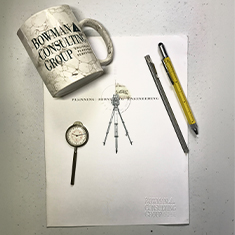
Building a firm that attracts people, not just transactions, requires balancing scale, preserving culture and investing in long-term success.
By Gary Bowman, Founder & CEO of Bowman
When I founded Bowman in 1995, I couldn’t have predicted what the next three decades would look like, let alone that we’d be here today, celebrating our 30th anniversary with a team of more than 2,000 people across the country. Like so many in this industry, our path has been shaped by challenges, adaptation and a drive to build a company that endures–not just for our clients, but for our people.
As I reflect on our journey, one thing becomes clear: resiliency isn’t something you develop on the fly when times get tough; it’s something you have to build into your DNA from the start. That mindset–what I’d call resilient by design–is what I believe makes a firm attractive, not just to clients, but to potential merger partners and seasoned executives looking for their next chapter.
Balancing scale and identity.
The AEC industry is currently undergoing a shift. Economic volatility and demographic transitions are pushing firms to move beyond traditional delivery models. For many companies, scale is becoming a necessity–not just for efficiency, but for the flexibility to evolve.
At the same time, cultural cohesion and entrepreneurial identity have never been more important. Clients and employees alike are seeking relationships grounded in trust and shared purpose. There’s a real tension here: how do you grow fast enough to stay competitive without diluting what made you successful in the first place?
That’s a question we’ve learned to address, but it’s one that many leaders in the industry are now facing head-on.
Creating optionality.
At Bowman, we’ve pursued a strategy of intentional expansion by growing through a combination of organic opportunity and acquisition. What we’ve been building is optionality–ways to better serve our clients, create more meaningful career paths for our people and position the firm to withstand whatever the market throws our way.
We’ve done this without losing our ambition or identity, which didn’t happen by accident. It takes real discipline to grow in a way that enhances your culture rather than dilutes it. And it takes humility to integrate firms in a way that preserves what made them successful.
This is particularly important for founders and executives considering a merger or acquisition. The fear of being swallowed by a larger firm is real and often justified. But there’s a difference between consolidation and collaboration. The right partnership should feel like an accelerant, not an endpoint.
Why culture is the real asset.
We talk a lot in this business about technical capabilities, backlog and balance sheets. Those matter. But I’d argue that a company’s most valuable asset–especially during times of transition–is its culture.
At Bowman, we’ve created a place where great people want to stay, grow and contribute. Our teams lead by example, collaborate across disciplines and push the boundaries in everything they do. That kind of culture doesn’t show up on an org chart or a spreadsheet, but it’s what drives long-term success.
It’s also what makes us attractive to talent, to clients and to future partners. We’re not trying to be all things to all people. But we are building something that ambitious people want to be part of. That applies whether you’re a rising engineer, a founder looking for a landing place for your firm or a senior executive ready for a change.
The next 30 years.
We’ve spent the last 30 years building a half a billion-dollar company by staying true to our purpose, embracing change and investing in people. That foundation is what makes the road ahead so exciting. The future of the AEC industry is uncertain, but with it comes constant opportunity. For those with a clear sense of purpose and a willingness to evolve, this is a generational moment to reimagine what our firms can become.
We are betting on a future where flexibility, integration, and culture are competitive advantages. Where personal success and company success go hand in hand–and where the best partnerships are grounded in shared ambition and mutual respect.
As we mark our 30th year, I’m more confident than ever in where we’re headed. Not because we have all the answers, but because we’ve built a foundation strong enough to rise to any challenge.
To anyone out there thinking about what’s next for your firm or your career: consider the kind of foundation you want to stand on. And more importantly, who you want to build it with.
This article was originally featured in The Zweig Letter



